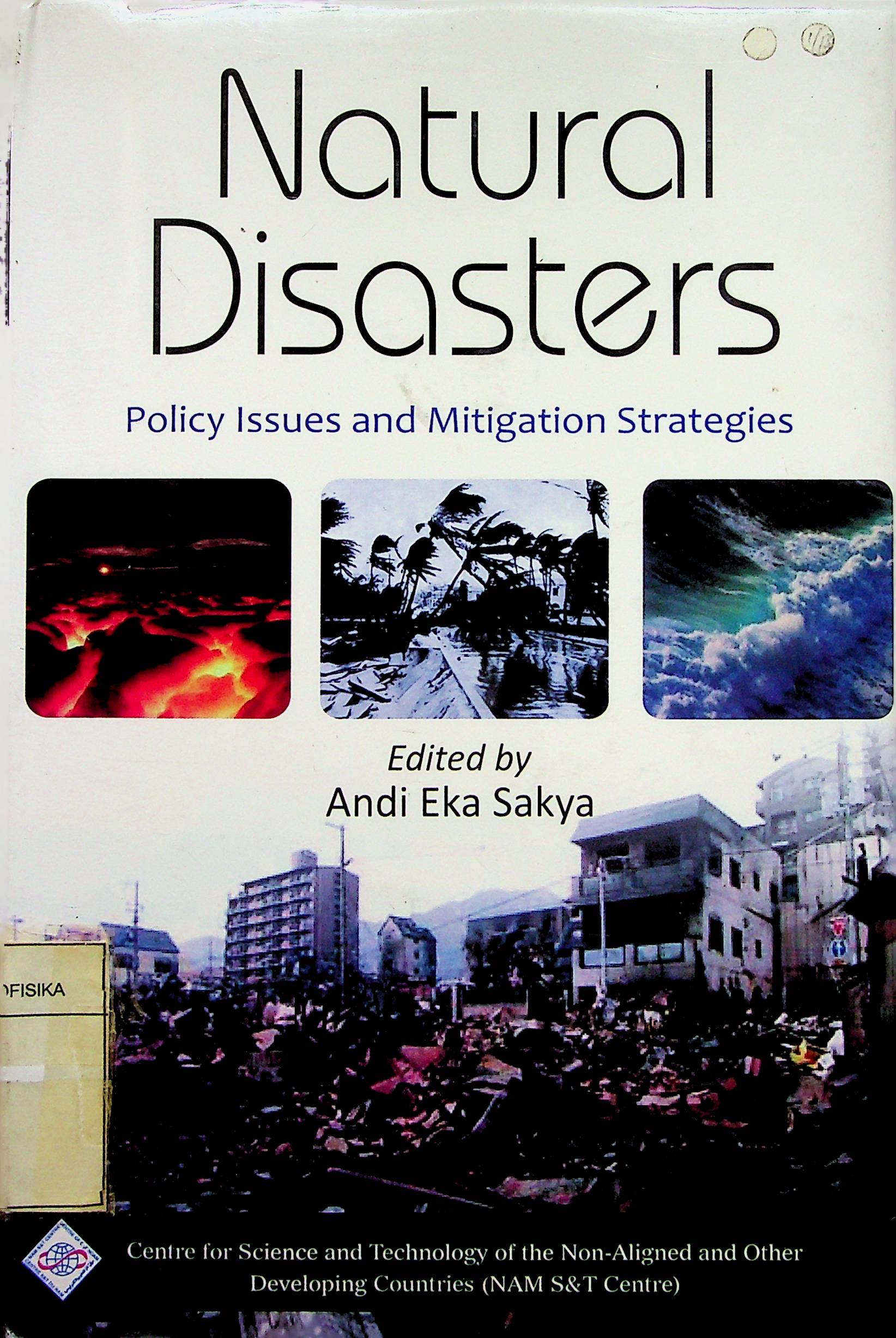Natural disasters, regardless of country or territory or time they strike, leave behind a mind-boggling trail of -their signatures and countless eye-opening lessons no university of the world can ever teach. The conventional university education teaches us first, and takes our test afterwards. Disasters do exactly the opposite. They take our test before they teach us in the live laboratory of Nature. It is therefore, only wise that we beat the test-teach cycle of the Nature by learning from the past disasters, if we are really serious about reducing their negative impact until we perfect the art of disaster prevention. The learning process, like the Vedas, is without a beginning or without an end and invariably throws us into the vortex of the paradox that more we learn, the more remains there to be learned. When exposed to the aftermath of a severe natural disaster anywhere on the globe, the sky becomes the limit to which the learning process could, and should go on. And there is enough to learn, for every country, at all levels of hierarchy, at all times. We must begin with a vow to learn from every disaster, not to repeat the past mistakes, convert every disaster into a great learning opportunity and declare a collective war against our own exploitative tendencies and violence against nature that lie at the root of the problem. Natural Disasters Mitigation being a subject of profound global concern, hundreds of teams and taskforces across the globe are perennially busy addressing the multifaceted aspects of natural disasters in the different geo-climatic, cultural and socio-economic settings. Since developing countries are the worst hit by natural disasters and their problems are more or less of the same genre, building joint programmes and partnerships in science and technology seems quite natural these days. Since most of the developing countries lack even the minimal of resources and wherewithal to fight natural disasters, they regard the hand holding exercise as a very wise move of great potential. And indeed wherever win-win partnerships have emerged, the cause of natural disaster reduction has flourished, without question. On the other hand, wherever developing countries have tried to stand in isolation either by accident or by the design, the progress has been tardy.The International Roundtable on Natural Disaster Management: Lessons from Natural Disasters, Policy Issues and Mitigation Strategies held during 8-12 January, 2007 at the joint initiative of the Centre for Science and Technology of the Non- aligned and Other Developing Countries (NAM S&T Centre) and Centre of Disaster Mitigation and Management (CDMM) of the Vellore Institute of Technology University was expressly designed to promote such partnerships. It may also be seen as a pace¬setter initiative by the NAM S&T Centre to create an interactive platform for exchange of experiences on disasters. The two visible gains of the initiative are the Vellore Declaration 2007 that sets the agenda for action and this compendium of country reports now in your hands that walks you through the proceedings of the roundtable. It also has potential to lead to bilateral and multi-lateral programmes between and among the participating member States.The fate of millions of people in the world is written and rewritten, and often underscored, not in the texts of the developmental plans and reports but by the onslaught of frequent cataclysmic events. Disasters often lead and the Plans follow. Survivors are condemned to their fates worse than dead. Besides huge losses of lives and property, the very wheels of progress and development get jammed. Sometimes, even if the initial impact of a disaster is not quite severe, its eventual consequences could still be lethal. For example rainstorm-flood contamination-epidemics; or cyclone-flood contamination-epidemics can end up with a mass graveyard scenario, throwing even the best of the post disaster management machinery haywire.Let us resolve not to miss any opportunity any more and learn to fight disasters together in a spirit of co-operative endeavour. There are positive sides of disaster as well. Disasters help us to test our ideas on the whole range of issues, as also give us the opportunity to learn and innovate. Every disaster provides policy makers the heaven sent opportunity to put their policies on the anvil. Professionals charged with the responsibility to manage natural disasters, likewise, get a good opportunity to introspect and see by hindsight where their preparedness plans and strategies let them down and why? Scientists do get a load of new problems, enough food for thought as also fresh ideas and the rare ammunition to re-write their research proposals in search of cost effective solutions. Since dead tell no tale, those who survive are our best informers.When a disaster strikes, although we cannot recreate the lost lives, we can certainly endeavour to ensure that no more lives will be lost on repeat of such events in future by converting every disaster into an opportunity to learn and to build back better. For example, we can resolve that unplanned, non-engineered constructions razed to ground by disasters will be replaced by disaster resistant, construction engineered to take into account the future needs. When planning for immediate action, let us use all our collective wisdom, education, training and tools, to quickly respond to every disaster. When planning for a medium term of a decade or so, let us aim at enhanced safety through a systematic plan. And when planning for the long-term future, let us educate people about the great culture of safety which is our ultimategoal. Let us not forget that all the thinking (knowledge) and good work (action) are required to be done between the two disasters. Thomas-Henry Huxley once said that the great
5
NATURAL DISASTER
Andi Eka Sakya
Penerbit :
All rights reserved with NAM S&T Centre
Tahun :
2011
Buku Text
-
No Scan92
-
No Klasifikasi363.3
-
ISBN
-
ISSN
-
No Registrasi01A/II/2012
-
Lokasi Terbit
-
Jumlah Hal43
-
Label363.3 Sak n
-
Versi DigitalTIDAK
-
Versi FisikTIDAK
-
Lokasi Rak Buku Fisik//
-
Jumlah Exemplar Fisik Tersedia-







